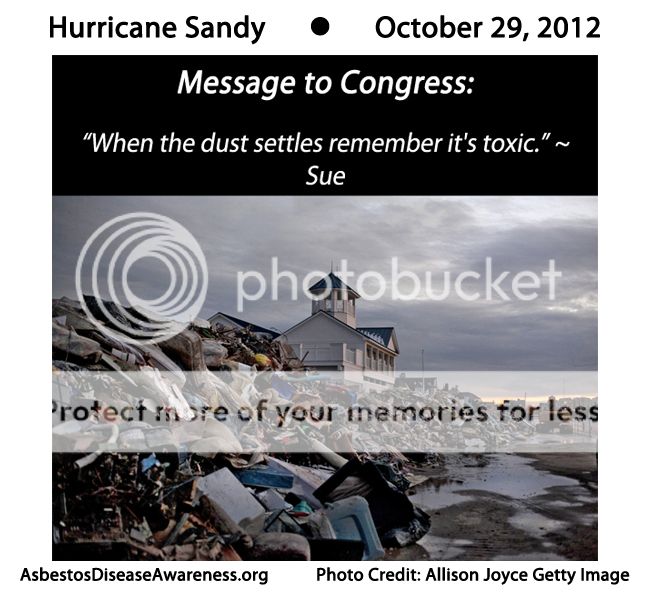Posted on October 29, 2013
It’s been a year since Hurricane Sandy, second-costliest hurricane in United States history, devastated New York, New Jersey, and Connecticut. We have made strides in getting back to where we were before Hurricane Sandy. However, the aftermath of a natural disaster like Hurricane Sandy leaves us with a far too common scenario where there is post-natural disaster toxic debris that poses serious health hazards.
Knowledge is power. The Asbestos Disease Awareness Organization (ADAO) educational campaigns continue to increase awareness to prevent exposure after natural disasters like Hurricane Sandy. There was over 5.6 million cubic yards of debris removed after Hurricane Sandy. Toxic debris remains a threat in the US considering that more than 30 million homes, offices, and schools contain asbestos.
ADAO urges families and volunteers to take the following four steps to prevent toxic exposure.
IDENTIFY: Learn where asbestos is in your home.
DON’T TOUCH: Asbestos is a human carcinogen. Asbestos-containing materials may release fibers when they are disturbed, damaged, removed improperly, repaired, cut, torn, sanded, sawed, drilled or scraped.
TEST: Confirm the presence or absence of asbestos.
REMEDIATION: If tests confirm asbestos, hire trained and accredited asbestos professionals to repair and remove the asbestos-containing materials.
In unity,
Linda Reinstein

